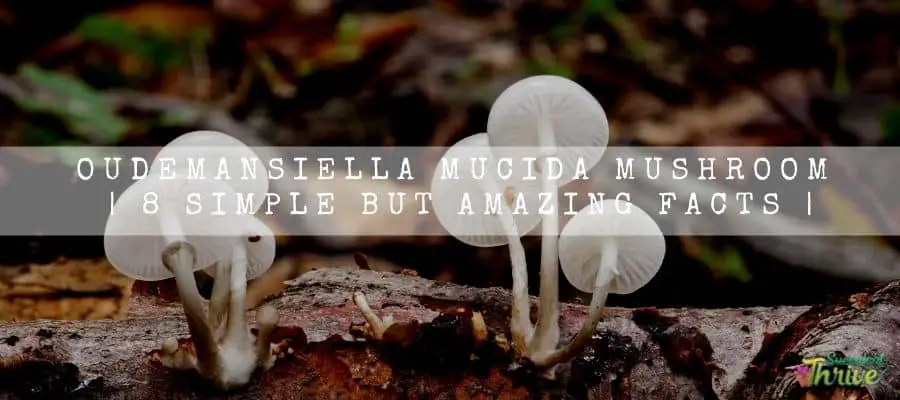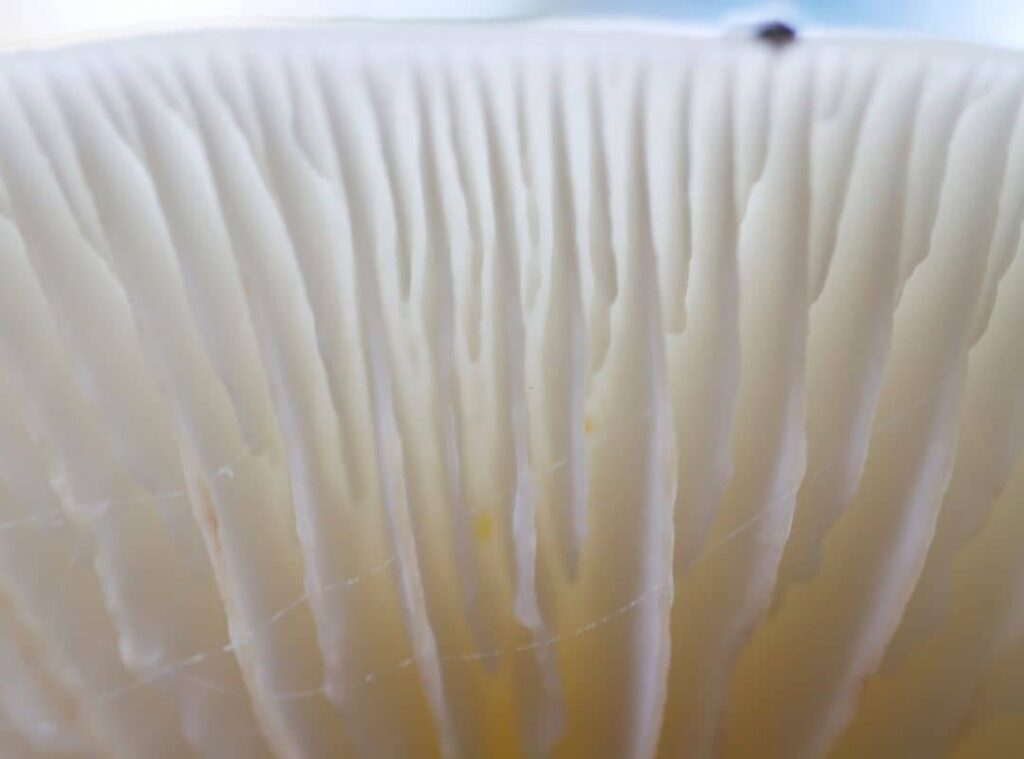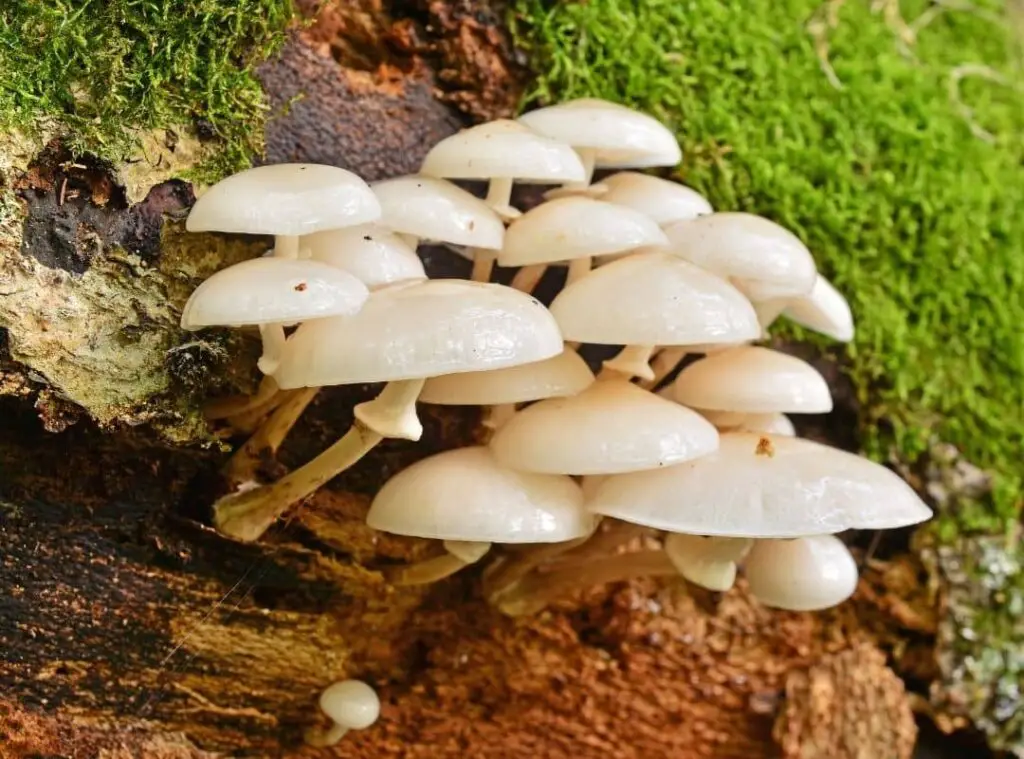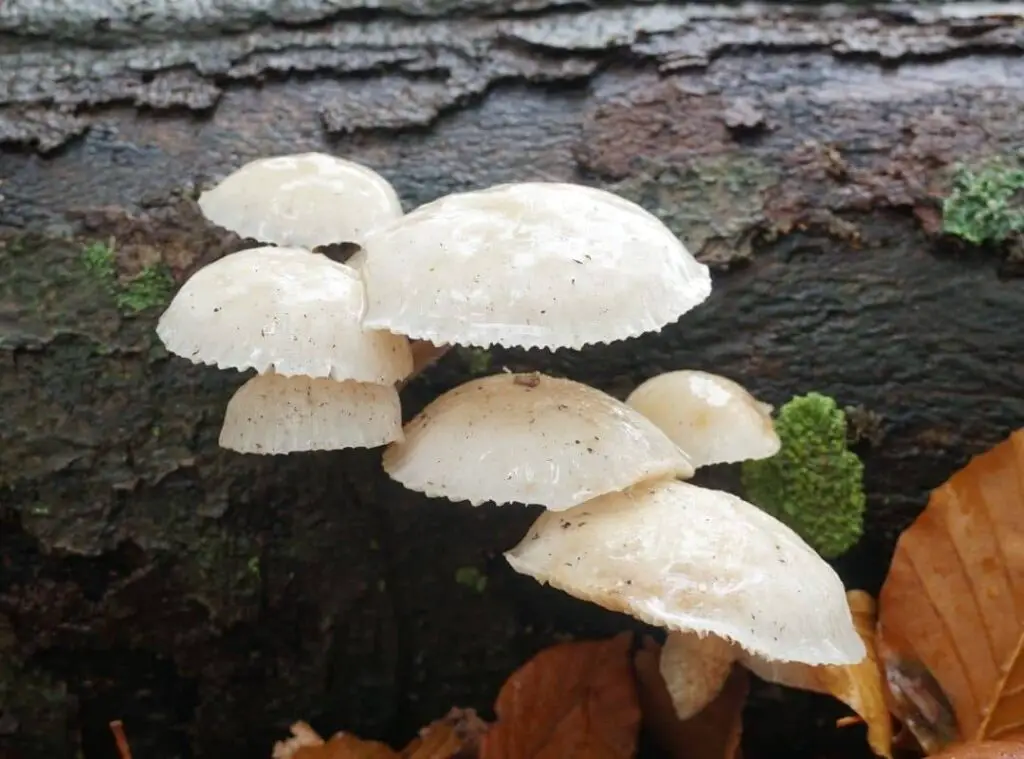Oudemansiella mucida also known as Mucidula mucida and porcelain fungus. They are mainly spotted in beech wood.
You could mainly locate them during autumn. Further you could spot them particularly on dead trunks and on fallen branches as well.
I am sure you may have come across beech trees that have fallen on the ground which have been covered with porcelain fungus.
Moreover, botanists have discovered that Oudemansiella mucida releases a fungicide which is very strong and could even deter competitors.
Oudemansiella mucida is a basidiomycete fungus which belongs to the family Physalacriaceae. Furthermore, they are native to Europe.

How to Identify them
Oudemansiella mucida fungus is saprobic. Further chances are that it could grow weakly parasitic particularly on beech trees as aforesaid.
Ecology
Oudemansiella mucida specific to breech trees. Apart from that they could be located in stumps and trunks. Sometimes you could find them living in higher branches in the beech trees.
Cap of the mushroom
Oudemansiella mucida caps are translucent and white in color. Further it would tend to look like an ivory dome shape. When they mature it would take a flattened shape.
Apart from that they form an ochre flush at the center .You could spot them forking in the center of the body.
You may spot a glowing appearance from them in wet weather conditions. This may be due to mucus slime they secrete.
In terms of the sizes, they would be about 2-8 cm in diameter. Moreover, you may spot the gills forming through the cap flesh as well.
Gills
When it comes to gills of the Oudemansiella mucida, you could find them as adnate and broad. Further you are placed distantly.
Moreover, they are translucent and white in color in the young age and become ochre tint when they mature.

Color
Oudemansiella mucida are white in color.
Stem
Oudemansiella mucida stem is thin. Further they would consist of a substantial stem ring as well. In terms of the sizes of the stem, they would be about 3-7 mm in diameter.
On the other hand, their length would be about 8 cm. Apart from that they would tend to take a slightly curved shape .
Further their tufts stay enclosed to the small area of the host. The top part above the stem ring is white while on the other hand the part underneath the stem ring is slightly striate and gray in color.
Flesh
Oudemansiella mucida flesh would be thin and prominent in white in color. They are soft and carry a little herbaceous smell as well. Apart from that they will have a mild flavor.
Odore /taste
Their odore is not distinctive. However, when they are raw, it would have a good mushroom taste. Make sure you wash off the slime and only after that you need to cook.
Spore print
Oudemansiella mucida’ s spore print is white in color and globose in shape.
Oudemansiella mucida are Found in
You can commonly find Oudemansiella mucida in the UK and Ireland. Apart from that, you could find them in northern Europe too, particularly in the places where you could find a lot of beech trees.
You could commonly come across them in tree trunks fallen branches of the dead beech trees. Apart from that Oudemansiella mucida would occupy the dead ranches on living beech trees.
You could commonly spot them growing in the higher branches and in the large tufts of the beech trees.

Taxonomy
Oudemansiella mucida was initially described by Heinrich Adolf Schrader in 1794. He was a German botanist and a mycologist.
Further he is the one who named the porcelain fungus Agaricus mucidus. However, a mycologist called Franz Xaver Rudolf von Honnel (1852-1920) transferred this species to the genus Oudemansiella.
There are synonyms such as Agaricus mucidus Schrad, Collybia mucida (Schrad: fr) Ouel Armillaria mucisa (Schrad) P. Kumm and Mucidula mucida (Schrad) pat.
Oudemansiella genus first initiated way back in 1880. To be precise it was first established in 1881 by an Italian Argentinian mycologist called Carlos Luigi Spegazzini.
Later on it was named after Dutch mycologist Cornelius Anton Jan Abraham Oudemans (1825-1906) in order to honor the service he had done.
Further the term mucida is related to the transparent mucus layer which grows covering the caps of these mushrooms.
In addition to that, Beech tuft is another name which you could use to call them. Further there are other names such as poached egg fungus or porcelain mushroom.
Are they Toxic /poisonous?
Porcelain fungus is not poisonous. Having said that, there are certain studies which have stated that porcelain fungus is mildly toxic.
People who eat this mushroom say that they can consume the mushroom once you wash and clean the mucus. There are special methods of preparing them when cooking.

Are they edible?
Porcelain fungus is edible. However, before you consume make sure you wash it to get rid of the putting mucus.
Cooking methods
Before proceeding with cooking, you should first wash and remove the mucus. Alternatively, you could peel off the caps to remove the mucus too.
Further you may collect the larger caps as the flesh is slender and insignificant.
Uses of porcelain fungus
Porcelain fungus has the capability to control a dead tree and is competent enough to rival fungus. To do that they use their strong fungicides.
There are some studies which have been done in the 1980s which have been attributed to form an agricultural fungicide called the strobilurins.
They have been useful to protect the wheat and fruit crops from powdery mildew attacks. Further they are useful for consumption too.
Is there Cultivation method for this mushroom?
There are no specific methods to cultivate this mushroom.
Read Next : 5 Incredibly Useful Facts About Black Earth Tongue Mushroom
